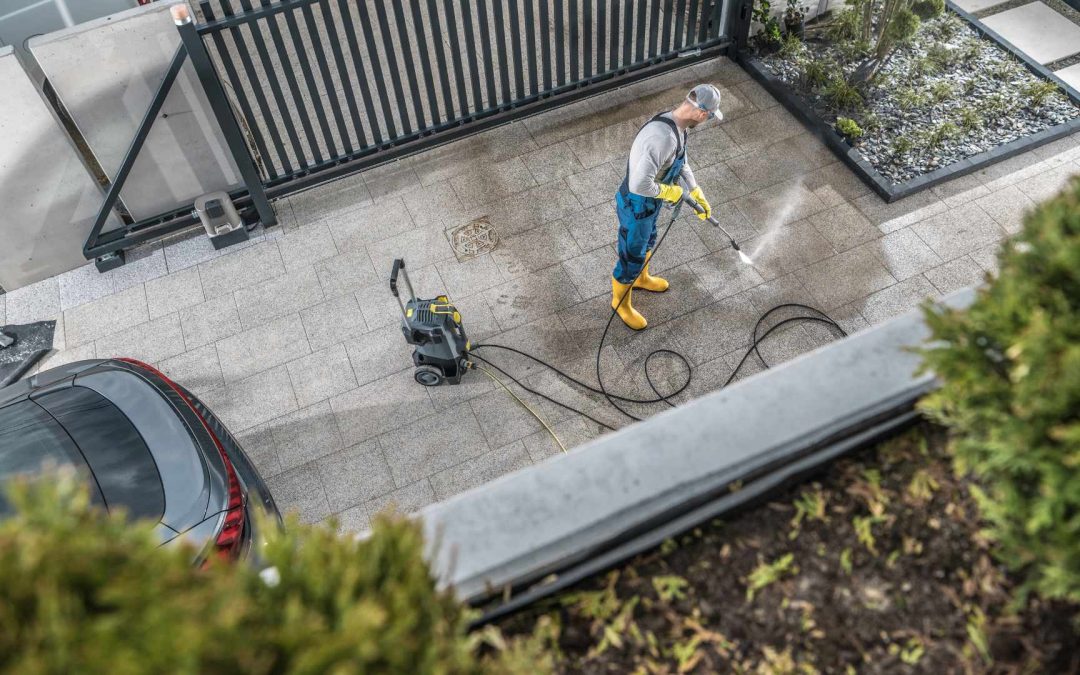When it comes to outdoor living spaces, the decision between stamped concrete and pavers can seem daunting. Both materials are popular patio and walkway options that offer an attractive addition to any landscape. While they share some similarities, there are distinct differences between them that should be considered when deciding which material is best for your project. To make the best choice, let’s look at both of these materials from a pros and cons standpoint.
Stamped Concrete Pros
Stamped concrete is an excellent value for money since it is much cheaper than pavers. It also offers flexibility in design as it can be stamped with various patterns or colors, making it easy to customize your surface to match any existing decor or style preference. Stamped concrete can provide a good alternative for those who want the look of more expensive materials such as brick or natural stone without the associated cost. In addition, because it’s poured instead of installed piece by piece like pavers, it often requires less labor than other hardscape surfaces and is usually ready to use much sooner.
Stamped Concrete Cons
The main downside of stamped concrete is its vulnerability to staining or cracking over time due to exposure to certain elements such as de-icing salts or pool chemicals. This can often lead to costly repairs if not addressed promptly. Furthermore, while stamped concrete can mimic the look of other materials well enough, it still cannot match their strength or durability in most cases so you may end up needing more maintenance down the line. Additionally, due to its heaviness and large installation area required for proper curing, this type of surface does not work well on slopes or areas prone to erosion due to runoff water from rainstorms or snow melt runoff.
Pavers Pros
When choosing pavers as an option for your outdoor space, you will get a durable surface that is extremely strong and resistant to damage caused by ice and harsh chemicals used in pools and spas. Unlike stamped concrete which must be completely redone if one area becomes cracked or stained, damaged pavers are much easier (and cheaper) to repair since individual pieces can just be removed and replaced without affecting the entire surface area around them. They also provide significant drainage capabilities due to their separate pieces, which allow water runoff through joints between each one instead of sitting stagnant on top like with stamped concrete leading to fewer problems with puddles forming during inclement weather conditions like heavy rains or snow melt events. Lastly, they come in a variety of shapes, sizes colors, so you have much more freedom when creating unique designs with them compared with stamped concrete which has limited customizable options available due to its one-piece nature design structure once cured in place..
Pavers Cons
Pavers do have some drawbacks too, though, including higher upfront costs since they must be installed piece by piece using specialized equipment rather than being poured like with stamped concrete, so there will be additional labor costs associated with them as well, especially if intricate patterns are desired when laying out sections. In addition, they require regular cleaning maintenance to avoid the buildup of moss, mildew, algae, and other pollutants over time. Although this isn’t typically too difficult to accomplish long, they keep looking their best. Finally, while they offer excellent drainage capabilities mentioned previously, they tend to freeze-thaw cycles which cause minor shifting, sometimes termed “heaving,” causing small gaps between sections that need to be filled and re-compacted to prevent more significant damage from occurring.

